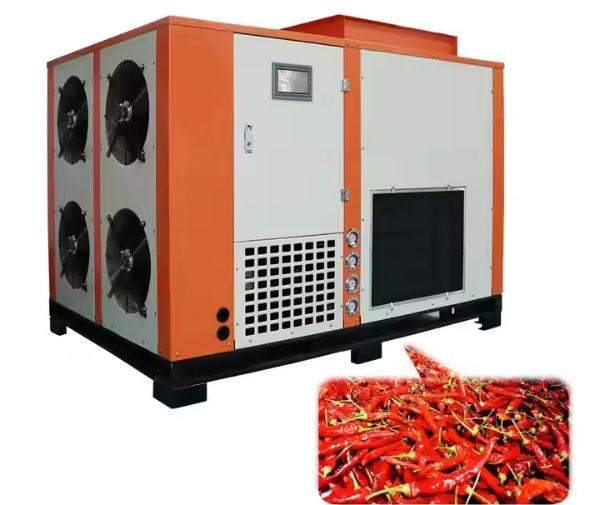
Content Menu
● Introduction to Room Type Drying Machines
>> Benefits of Room Type Drying Machines
● Applications of Room Type Drying Machines
>> Household Use
>> Commercial Use
● Operational Aspects of Room Type Drying Machines
>> How They Work
>> Choosing the Right Machine
● Sustainability and Environmental Impact
>> Community Initiatives
● Conclusion
● FAQ
>> 1. What are the primary benefits of using room type drying machines?
>> 2. How do room type drying machines compare to traditional ovens for dehydration?
>> 3. What types of food can be dehydrated using room type drying machines?
>> 4. How do I choose the right room type drying machine for my needs?
>> 5. Are room type drying machines environmentally friendly?
● Citations:
In recent years, the demand for sustainable food preservation methods has increased significantly, and room type drying machines have emerged as a key solution. These machines, often used in the form of food dehydrators, offer a cost-effective and environmentally friendly way to preserve food by removing moisture, thus extending shelf life and reducing waste. This article will delve into the benefits, applications, and operational aspects of room type drying machines, highlighting their role in sustainable food management.

Introduction to Room Type Drying Machines
Room type drying machines, commonly known as food dehydrators, are designed to remove moisture from food using controlled temperature and air circulation. This process helps maintain the nutritional value of food while preventing spoilage. Unlike traditional preservation methods like canning or freezing, dehydration is a low-energy process that can be performed at home or on an industrial scale.
Benefits of Room Type Drying Machines
1. Sustainability: These machines reduce food waste by allowing users to preserve surplus food, which would otherwise be discarded. For instance, households can dehydrate fruits and vegetables that are near expiration, turning them into healthy snacks or ingredients for future meals.
2. Energy Efficiency: Room type drying machines are more energy-efficient compared to conventional ovens. They operate at lower temperatures and use less power, making them a cost-effective option for both households and commercial operations.
3. Nutrient Preservation: Dehydration helps retain the nutrients in food by removing moisture without cooking the food. This method is particularly beneficial for preserving vitamins and minerals that are sensitive to heat.
4. Versatility: These machines can be used to dry a wide variety of foods, including fruits, vegetables, meats, and even flowers. This versatility makes them useful for both culinary and decorative purposes.
5. Flavor Enhancement: Dehydrating food concentrates its flavors, making dried fruits and vegetables taste more intense than their fresh counterparts. This can enhance the overall taste of dishes when used as ingredients.
6. Convenience: With the ability to prepare snacks at home, users can avoid preservatives and additives often found in store-bought dehydrated products. This convenience promotes healthier eating habits.
7. Cost-Effectiveness: Over time, investing in a room type drying machine can save money by reducing grocery bills through effective food preservation techniques.
Applications of Room Type Drying Machines
Household Use
At home, room type drying machines are used to create healthy snacks like dried fruits, vegetable chips, and jerky. They are also useful for preserving seasonal produce, allowing families to enjoy their favorite fruits and vegetables year-round. For example:
- Fruit Preservation: Homeowners can dehydrate apples, bananas, or berries to create nutritious snacks that last longer than fresh fruit.
- Vegetable Chips: Kale or zucchini can be transformed into crispy chips without added oils or preservatives.
- Herbs: Fresh herbs can be dehydrated for use in cooking throughout the year.
Commercial Use
In commercial settings, these machines are essential for food manufacturers who need to preserve large quantities of food. They are used in the production of dried fruits, nuts, and even pet food. The ability to dehydrate food on a large scale helps reduce waste and increase product shelf life.
- Snack Food Industry: Companies producing trail mixes often rely on dehydrated fruits and nuts for their products.
- Catering Services: Chefs use dehydrated ingredients to create unique flavors and textures in gourmet dishes.
- Health Food Stores: Many health-focused retailers sell dehydrated snacks made from organic produce.

Operational Aspects of Room Type Drying Machines
How They Work
Room type drying machines work by circulating warm air over food placed on trays. This process slowly removes moisture while preserving flavor and nutrients. The temperature and airflow can be controlled to ensure even drying and prevent over-drying.
1. Airflow Mechanism: Most dehydrators feature a fan that circulates hot air around the trays where food is placed. This airflow is crucial for even dehydration.
2. Temperature Control: Users can set specific temperatures depending on the type of food being dried; for instance, herbs may require lower temperatures than meats.
3. Timing Settings: Many modern dehydrators come with timers that allow users to set how long they want their food to dry without needing constant supervision.
Choosing the Right Machine
When selecting a room type drying machine, consider factors like capacity, temperature control, energy efficiency, noise level, and ease of cleaning:
- Capacity: Depending on your needs—whether you're a casual user or running a business—you'll want a machine that fits your volume requirements.
- Temperature Control: Look for models with adjustable temperature settings for greater versatility in what you can dry.
- Energy Efficiency: Energy-efficient models not only save on electricity bills but also have a lower environmental impact.
Sustainability and Environmental Impact
Room type drying machines contribute to sustainability by reducing food waste and energy consumption. They are particularly beneficial in regions where food preservation is crucial due to seasonal fluctuations in produce availability.
Community Initiatives
Many communities have started initiatives focused on reducing food waste through education about dehydration techniques:
- Workshops: Local organizations often conduct workshops teaching people how to use dehydrators effectively.
- Food Banks: Some charities partner with local farms to dehydrate surplus produce which can then be distributed as nutritious meals.
Conclusion
Room type drying machines offer a sustainable solution for food preservation, providing numerous benefits for both households and commercial operations. Their ability to reduce waste, preserve nutrients, enhance flavors, and operate efficiently makes them an essential tool in modern food management. As the world moves towards more sustainable practices, the role of these machines will continue to grow.
By investing in room type drying machines, individuals and businesses alike can contribute positively toward environmental sustainability while enjoying deliciously preserved foods all year round.

FAQ
1. What are the primary benefits of using room type drying machines?
The primary benefits include reducing food waste, preserving nutrients, enhancing flavors through concentration, operating with high energy efficiency, convenience in preparing healthy snacks at home, and overall cost-effectiveness over time.
2. How do room type drying machines compare to traditional ovens for dehydration?
Room type drying machines are more energy-efficient than traditional ovens as they operate at lower temperatures specifically designed for dehydration without cooking the food. They provide better airflow control which ensures consistent results across all trays.
3. What types of food can be dehydrated using room type drying machines?
A wide variety of foods can be dehydrated including fruits (like apples and bananas), vegetables (like tomatoes and zucchini), meats (like beef jerky), grains (like oats), herbs (like basil), and even flowers for decorative purposes.
4. How do I choose the right room type drying machine for my needs?
Consider factors like capacity based on your usage (home vs commercial), temperature control options available on the model you choose (for different types of foods), energy efficiency ratings (to save costs), noise levels if you prefer quieter operation during use, and ease of cleaning features such as removable trays or dishwasher-safe components.
5. Are room type drying machines environmentally friendly?
Yes! They are environmentally friendly as they significantly reduce food waste by allowing users to preserve excess produce while consuming less energy compared to traditional cooking methods like ovens or microwaves which require higher power levels over longer periods.
Citations:
[1] https://www.enrich360.com.au/news/saving-the-planet-and-money-why-food-waste-dehydration-machines-are-more-cost-effective-than-you-think
[2] https://airtekdehydrator.com/blog/health-advantages-using-food-dehydrator/
[3] https://www.bergmanndirect.co.uk/food-waste-dryers
[4] https://www.alamy.com/stock-photo/food-dehydrator.html
[5] https://www.ike.cn/video.html
[6] https://www.dehydratefood.info/faq/
[7] https://www.seriouseats.com/food-dehydrator-to-reduce-food-waste-7105642
[8] https://harvestright.com/faqs/
[9] https://www.frontiersin.org/research-topics/58144/sustainable-drying-technologies-for-foods-enhancing-quality-and-energy-efficiency
[10] https://www.thepurposefulpantry.com/dehydrating-faq/
[11] https://www.bxdrymachine.com/faq
[12] https://www.linkedin.com/pulse/common-questions-food-dehydrators-aradmachinery
[13] https://www.hachettebookgroup.com/storey/buying-food-dehydrator/
[14] https://www.bestbuy.com/discover-learn/10-reasons-to-buy-a-food-dehydrator/pcmcat1634332391134
[15] https://www.g-dry.com/en/index
[16] https://tmsystems.com/revolutionizing-sustainability-smart-drying-solutions-aiming-for-net-zero/
[17] https://www.webmd.com/diet/dehydrating-food-good-for-you
[18] https://www.youtube.com/watch?v=mtDzdYoyeR8
[19] https://www.youtube.com/watch?v=FtEyw8vxXSo
[20] https://www.youtube.com/watch?v=rR2G5UO-5Ms
[21] https://www.youtube.com/watch?v=Zl4wTcCPJu0
[22] https://www.youtube.com/watch?v=Namf-Ddo_Xo
[23] https://www.reddit.com/r/HarvestRight/comments/12z7lpb/newbie_with_questions/











